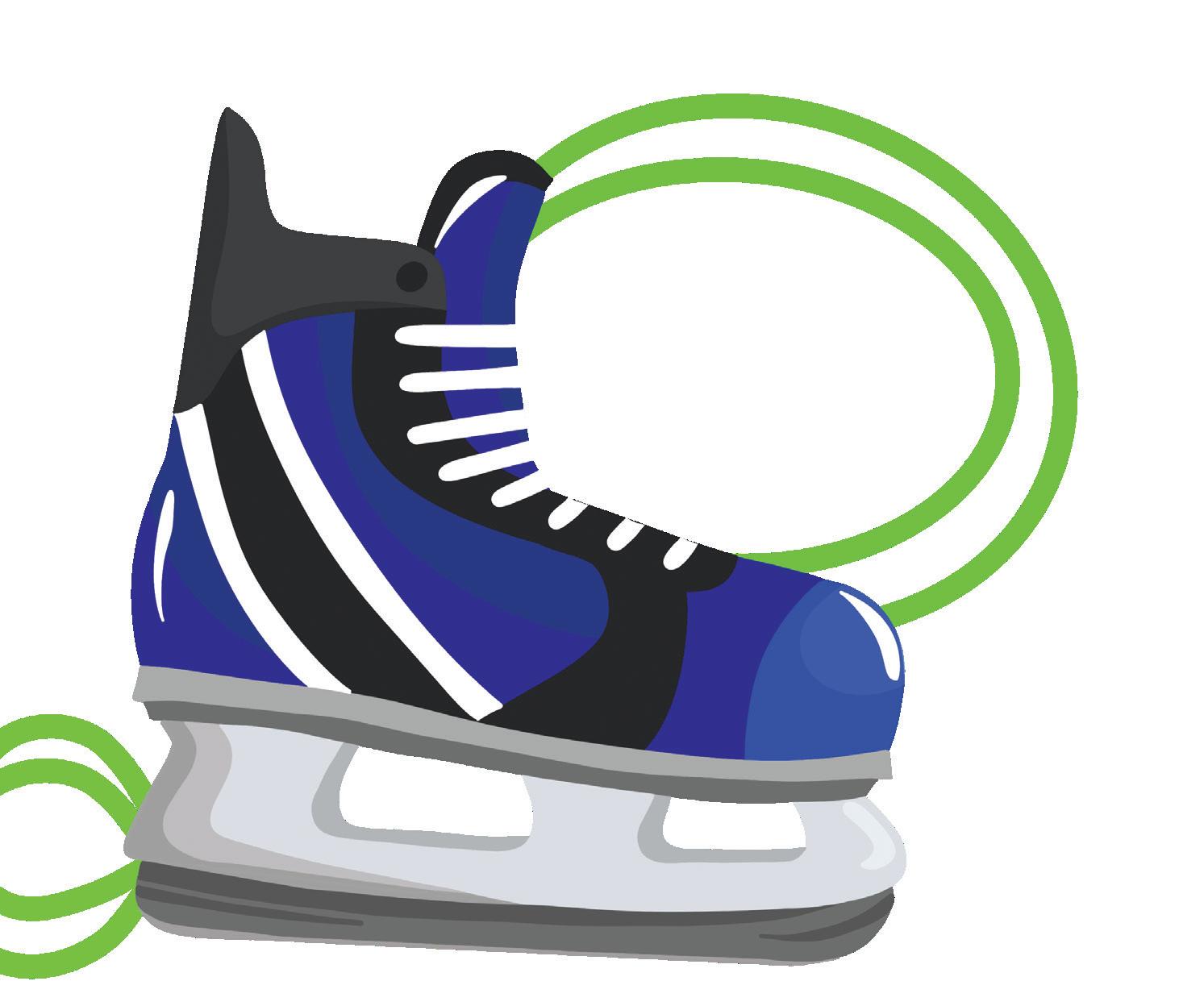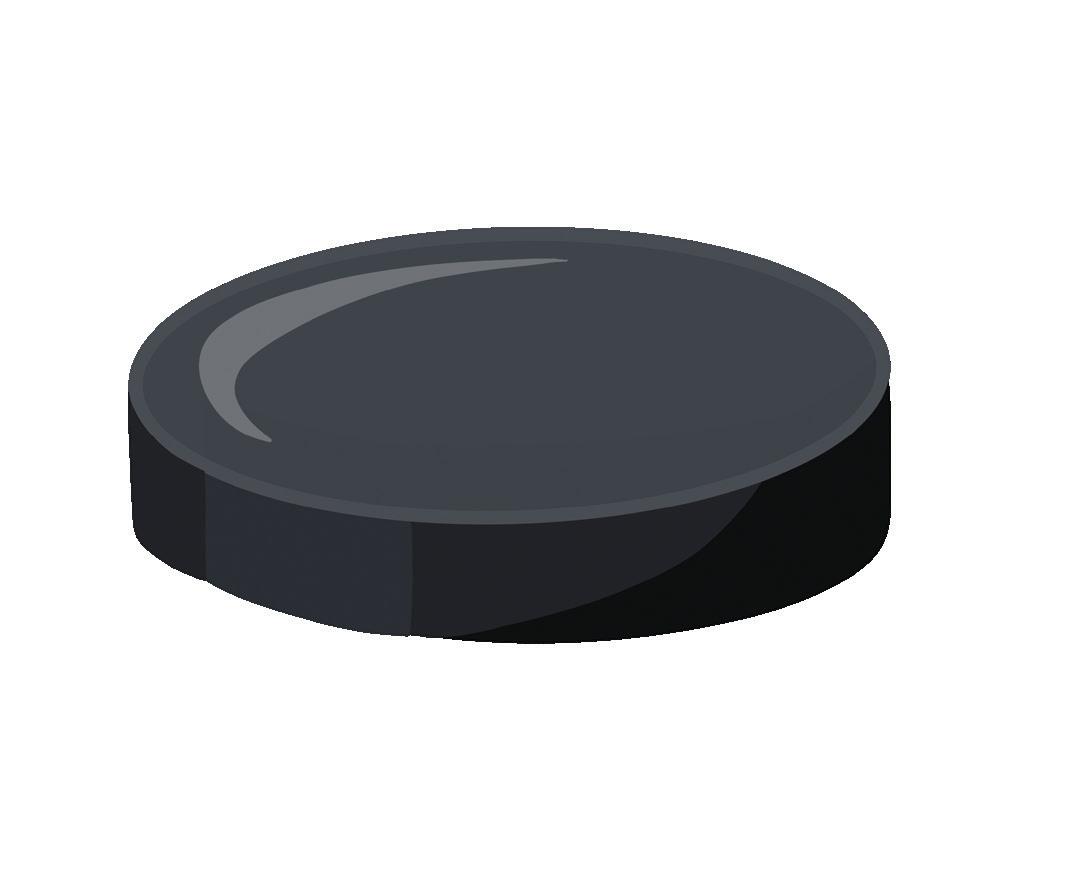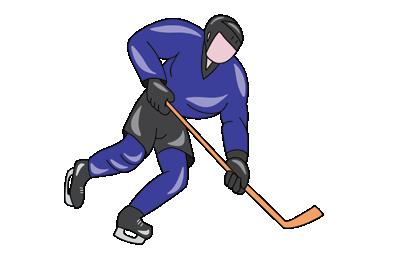
4 minute read
On therink
Breaking the ice about one of Paly’s most unique and unsung sports programs.
that [Paly has] an ice hock ey team, I don’t think I would go to a game,” Owens said. One reason why many Paly students are reluctant to at tend games is because the sport is not oficially affiliated with the school. The team, founded in 2017, functions as a club team with special being part of the school but in the future that might be something the team might want to explore.”


Although the lack of school affiliation allows people for other teams to play for “Paly” and does not negatively impact their competition, it does have some drawbacks, mainly the lack of a structured training and competing without proper facilities.
Most high school hockey teams on the East Coast live within commuting distance of a skating rink, or have a rink at their school. Because Paly does not have a rink, and there are no adequate local rinks, the athletes must commute to San Jose to practice, around 30 to 40 minutes away from Palo Alto. Because of the long commute, practices are only held once a week.
Even though team members come from many different areas and schools, and have limited practice, athletes note that the dynamic is still positive and the players are well-connected.
“We were able to build up our chemistry so quickly through practicing together every Wednesday morning and awarding the player of the game with a funny looking viking helmet,” Paly sophomore Henry Harding said. “Overall it’s just a fun time to be able to play hockey with my friends and represent my school while doing it.” teams results in a smaller league than other high school sports.
The absence of one central or a handful of central rinks in the near area also affects the competition schedule; the competition is far more dependent of the scheduling limitations at the venue. Because of this, games do not operate on a set schedule with some weeks having up to two games while others have none.


This irregular scheduling leads to another drawback: lack of support and recognition. While other sports teams games and competitions are promoted by Paly, encouraging students to come to home games to support their classmates, this rarely happens for the hockey team. A lack of knowledge about the ice hockey team coupled with a long commute to games means that the stands are often empty, beyond the handful of parents and family friends. The team feels
“I understand that it’s pretty hard for a lot of people to go to our games since they are in San Jose,” Harding said. “I think if everybody collectively decided to show up to one game of ours that would be pretty cool.”
Harding recently created an Instagram account for the team in hopes of increasing the promotion of the team and their games. For those who can’t make it to games in person, the account also posts game recaps so fans can stay up-to-date.
“I created [the account] in order to promote when we have games and the final scores of those games for those who couldn’t watch the game in person,” Harding said.
Beyond spreading awareness about the games, the account also functions to spread awareness about hockey itself.
As with any relatively new sport, the next step for the hockey team is to continue to add people to its roster. The end goal is to create enough demand to fill a complete Paly roster and function like a traditional high school sport –– school-sanctioned and SCVAL and eventually CCS operated.




“I think the main way to grow hockey in California is by creating more exposure,” Hagan said. “Creating high school leagues and teams really helps expose the sport to a new audience and I think is the best way for hockey to grow.”
A benefit that would ideally come with this increased exposure is the addition of women to the team. Currently, despite being co-ed, the ice hockey team is allmale. Senior Ry Ewen has played on the Paly team since his freshman year, and experiences the lopsided gender split first hand.
“I’ve played against teams with girls on them but I’ve never had [a girl] as a teammate yet,” Ewen said.

The lack of girls on the team is partially due to a base-line lack of interest. Sophomore Briar Dorogusker has been ice skating for years, but has found it difficult to transfer her skills and habits between sports.
“I was at a birthday party where they had some hockey sticks and playing it was pretty fun,” Dorogusker said. “Then I took a class, which was less fun because we didn’t get to play much and it was mostly drills.”

However, according to various female athletes at Paly, another reason why few girls are looking to be on the team is because of the lack of female pro-hockey teams as well as the social stigma against girls playing hockey. The NHL is the only professional hockey league in the United States, and there are no women’s teams in this league. Furthermore, according to some Paly female athletes, hockey is typically portrayed as an “aggressive, violent, male-doinated” sport, and women who want to be on the ice are encouraged to figure skate instead. Sophomore swimmer Lucy Zhao agrees.
“If people see that there are only males on a team, women don’t want to join because they don’t want to be the only female,” Zhao said. “Also, seeing women at the professional level playing would inspire young women to want to play.” public indoor mens ice hockey game
In the end, the athletes and on the team hope that as the popularity of the sport increases, they will see a greater diversity of genders represented on their team, along with greater fan attendance, and hopefully one day school and league sanctioning. For now, they will continue to lace up their skates, layer up their gear, and skate their hardest in upcoming matches. Despite not being represented by the Paly, they will fight their hardest to win for it.
by SIRISHA MITRA and ASPEN STITT










